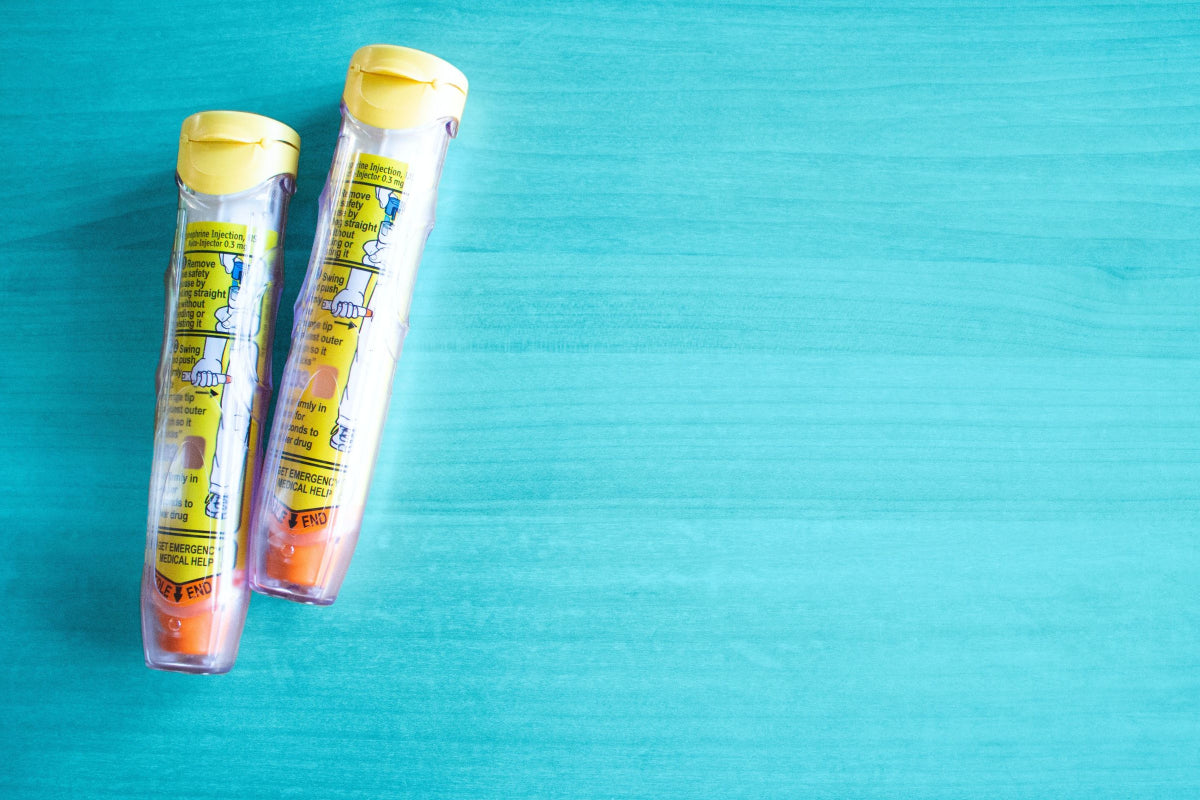
Not everything you hear about food allergies is true. There. I said it. As with a lot of things in this life, there are some common food allergy beliefs that just aren’t factual. While myth-busting is important no matter what the subject matter, it’s especially important when we’re talking about someone’s health. The following 6 statements are some of the more common food allergy myths you may have heard.
“I’ve eaten eggs all my life. There’s no way I’m suddenly allergic.”
Yes, it’s more common to develop allergies in childhood. However, a history of consuming a particular food does not mean those hives and that wheezing with chest tightness you experienced after eating an omelet can’t possibly be an indication of a new allergy. In fact, roughly 15% of food-allergic individuals are first diagnosed in adulthood. According to FARE, “More than one in four adults with food allergies report that all of their food allergies developed during adulthood, and nearly half of adults with food allergy report having developed at least one food allergy during adulthood.”
“You have a milk allergy? My friend had that. He just took a Lactacid pill before he had dairy products and he was fine.”
Food allergies and food intolerances are not the same thing. If you have a friend that was able to safely consume dairy products after popping something like Lactacid, you had a friend with a lactose intolerance. That’s a digestive system disorder and while it can be incredibly uncomfortable, it’s not life-threatening. Food allergies are an immune system disorder and they can be deadly. A food-allergic person cannot safely consume their allergens no matter what they take beforehand.
“Just a little bite can’t hurt.”
Actually, yes, it can. Trace amounts of a food allergen can trigger a reaction in an allergic person. Skin contact with a food allergen can trigger localized skin reactions. Heating a food allergen can release the proteins responsible for triggering a reaction into a steam or vapor that could in turn trigger a reaction in an allergic person. For example, a milk-allergic person might experience a reaction by walking into a coffee shop where milk is being steamed. A shellfish-allergic person seated next to a buffet of steaming crab legs and lobster tails may have an allergic response. There is no half-way on this. The only way to avoid a reaction, is to avoid the food allergen. Completely.
Actually, while we’re on the subject, let’s bust a related myth – you can’t scrape an allergen off and consider what’s left behind to be a safe meal. Allergic to almonds? You can’t pull the sliced almonds off the pastry on your plate and eat that sweet treat. The almonds that were there can leave behind trace amounts of the protein on the bit you’re about to gobble up and that tiny little trace bit can trigger a reaction. It’s not worth the risk.
In a similar vein, talk to your allergist about packaged goods that include a “may contain” type statement on the label. Although cross contamination labeling is not required, research indicates nearly 10% of packaged items with such a statement contain trace levels of the listed allergen in high enough quantities to trigger a reaction in an allergic person. That means that candy bar you’re holding that says “Made in a facility that also manufactures products containing peanut” may trigger a reaction in your allergic friend. Some individuals have consulted with their allergist and have decided that the 1 in 10 risk is worth taking. Others have decided it’s not. Talk to your allergist and make the choice that’s right for you.
“I’m allergic to sesame, but I only have mild reactions.”
This myth, and its cousin “Reactions will get worse each time you have one,” are inaccurate. The reality is that the body’s response to a food allergen is unpredictable. It doesn’t matter how you reacted to your allergens the first time, the 10th time or every time between, it won’t prepare you for how your body will react the next time. Always be prepared for the worst case scenario. Know that any exposure to a food allergen can result in a life-threatening reaction at any time no matter what you’ve seen before. And likewise, any food allergen can produce a mild response no matter what you’ve seen in the past. Avoid your allergens. Be prepared for an anaphylactic response.
“My child’s allergy tests were off the charts! She’s highly allergic!”
Those numbers relating to your food allergy test don’t tell you the type of reaction you may have or how highly allergic you are. As with the last myth, it’s important to remember that food allergy reactions are unpredictable. Individuals with high test numbers may have mild or severe reactions at any time; and likewise individuals with lower test numbers may have mild or severe reactions at any time. It’s also important to remember that trace amounts of a food allergen can trigger an allergic response in any allergic person. The “score” on your test results isn’t indicative of how bad your allergy is. Your child’s high test result isn’t any worse or better than another child’s different result. Further, allergy tests themselves are not always accurate to begin with. About 50-60% of tests can yield a false positive. It’s important to consult with a board-certified allergist to determine if you’re allergic at all and to define an allergy management plan for your specific needs. Remember, testing should be done by an allergist within the context of a full medical history.
“Peanuts are the most dangerous food allergen.”
Any food can trigger a life-threatening response in a person that is allergic to it. Someone with a milk allergy is as much at risk for anaphylactic shock as their peer with a peanut allergy. While the majority of the food allergies can be attributed to nine foods (milk, egg, peanut, tree nuts, soy, wheat, fish, shellfish and sesame), any food can be a food allergen and any of those allergens can trigger severe allergic responses.
